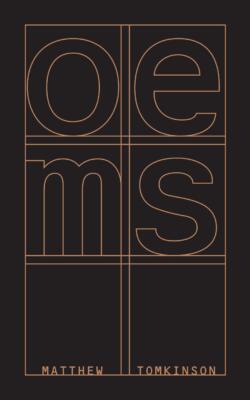1759 The bell of the artificial
oems
by Matthew Tomkinson
Montreal: Guernica Editions, 2022
$20.00 / 9781771837637
Reviewed by Matt Rader
*
 Turned one way, words are never enough, never able to capture fully what they point to. As Robert Hass puts it, “because there is in this world no one thing / to which the bramble of blackberry corresponds, a word is elegy to what it signifies.” I can say, here, look, a blackberry, but it’s not quite the same as an actual blackberry (try putting making blackberry jam!).
Turned one way, words are never enough, never able to capture fully what they point to. As Robert Hass puts it, “because there is in this world no one thing / to which the bramble of blackberry corresponds, a word is elegy to what it signifies.” I can say, here, look, a blackberry, but it’s not quite the same as an actual blackberry (try putting making blackberry jam!).
Turned the other way, words are always too much, not just signifiers but whole fields of quivering association and affective resonance. Here we welcome Jacques Derrida to the stage to say something about “the bramble of blackberry”, its sweetness, its scribble, its thorn scar across the chest, its drops of dark blood-coloured juice on the white countertop, its Sylvia Plath.
This is old thinking—which is one of Hass’s points in “Meditation at Lagunitas”—but it’s thinking that has been at the heart of Western poetries since at least Gertrude Stein’s Tender Buttons at the start of the 20th century: What is a word’s relationship to the world, to other words, to the phonemes that compose words in sound, to the textual marks that signify sounds on the page, to a word’s inherent insufficiency of meaning, to its gravitational pull of memory and feeling?
Mathew Tomkinson’s collection of lipogramatic poetry, oems, remembers Great Grandperson Stein fondly. Lipograms are poems that systematically exclude one or more letters. This game is even older than Tender Buttons, going all the way back to the ancient Greeks (Robert Hass: “That’s what I said!”). In oems, the exclusion is based on a textual feature: no letters with ascending or descending parts. The “p” in poems is out because of its tail, but “oems”, tailless, remains in the charmed circle.

Here’s a good example of how Tomkinson’s restriction engages the frisson of Steinian poetic intervention: Thinking about ascending and descending parts puts me in mind of the symbols for “female” and “male” that used to, more frequently, appear on bathroom doors. Could Tomkinson’s disavowal of the letters like “p” and “t” be a reference to the age of nonbinary gender identification? I have no idea, but the idea has me. Thanks, Tomkinson.
We don’t need to go beyond the title though to get a big heady hit of this stuff: oems is a phonetic relative of both ohm, a unit of electrical resistance, and, om, the Latinized version of the Hindu term for the primordial sound of the universe. Here’s Tominkson doing what poets have always loved to do: layering multiple meanings on one word. And what a word! It’s cheeky and reverent at the same time, a description that suits the book as a whole.
As you might imagine, the work in oems poses challenges to the writer and reader alike: there are only so many “nonbinary” words in the circle. The result is a non-monogamous relationship to meaning, narrative, and sense. There are whole pages that are alphabetical lists of words that fit through the mail-slot of his restrictions. There are list poems of specialized words: see xxxii.
aeromancers
amniomancers
auroumancers
avimancers
axiomancers
canomancers
There are spells, word-masses, and narrative bits (this is one of my faves: “we are on / cocaine / in vr”). Sometimes it’s hard to make it add up, but math doesn’t really seem to be the point (though counting is important!).
There are also moments of real clarity, invention, and lyric beauty:
even cranes
move en masse
in an uneven v
minnows
veer in
near-unison
cremains
commix
in an urn
we move
as one – our union
ever so amiss
our crimes
our innocence
our mess

Tomkinson seems to have some other restrictions in mind as well. Each poem is composed entirely of eight, centre-aligned tercets. There’s no punctuation, save the most even of marks, the dash. And, of course, there are no capital letters. He rarely uses a word twice (it’s possible, though I didn’t check, that he doesn’t repeat nouns or verbs). Beyond that, there are thirty-six poems in this slender collection, which, given the attention to this kind of detail, probably means something that I’m not quite getting at the moment. As Tomkinson puts it in the final poem: “six-x-six /oems / in a sase.”
That last word is important. A “sase”, as I read it, is a “self-addressed stamped envelope.” It used to be a standard feature of any poetry submission to a magazine: the magazine would use your own postage to let you know their decision. In this case, I read the “sase” as this book, as Tomkinson sending himself a submission.
From the bumpf on the back of the book, we learn some context that lends the work a crucial poignancy: Tomkinson identifies as someone with a “lived-experience of OCD” or obsessive-compulsive disorder. According to the paratext, oems is an attempt to exorcise the tendencies of OCD that plague him. Like your dad making you smoke the whole pack of cigarettes until you’re sick, I suppose, but something more creative, more transformative. The poems feel to me less like a ridding of a malignant spirt and more an act of odic maneuvering to get in right-relation to that which the poet has granted power in his life.
Here I return to the Modernist idea of language that Stein experimented with that gave way to the postmodernists and the post-structuralists with their thinking on the powers of language and the death of the author and into the frontiers of contemporary life with the looming civilizational crisis of artificial intelligence and language’s authenticity problem.
What I like most about Tomkinson’s book is that it renews the case for his human body, for the author as embodied, for language as embodied, for text as an extension of the body that feeds back into the body, for hearing the bell of the artificial within the natural as much as the other way around. That’s the sound of the universe and all its resistances. That, for me, is poetry.
*

Matt Rader is the author of the forthcoming chapbook, Atmospheric Moon River (Anstruther 2023). He teaches writing at UBC Okanagan. Editor’s note: Paul Falardeau reviewed Matt Rader’s Visual Inspection (Nightwood Editions, 2019), and Rader is interviewed here by The British Columbia Review.
*
The British Columbia Review
Publisher and Editor: Richard Mackie
Formerly The Ormsby Review, The British Columbia Review is an on-line book review and journal service for BC writers and readers. The Advisory Board consists of Jean Barman, Wade Davis, Robin Fisher, Barry Gough, Hugh Johnston, Kathy Mezei, Patricia Roy, Maria Tippett, and Graeme Wynn. Provincial Government Patron (since September 2018): Creative BC. Honorary Patron: Yosef Wosk. Scholarly Patron: SFU Graduate Liberal Studies.
“Only connect.” – E.M. Forster